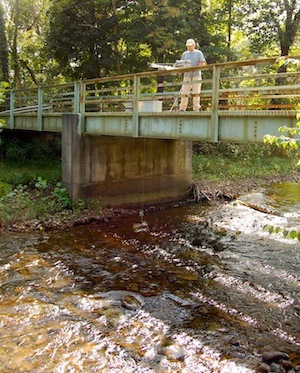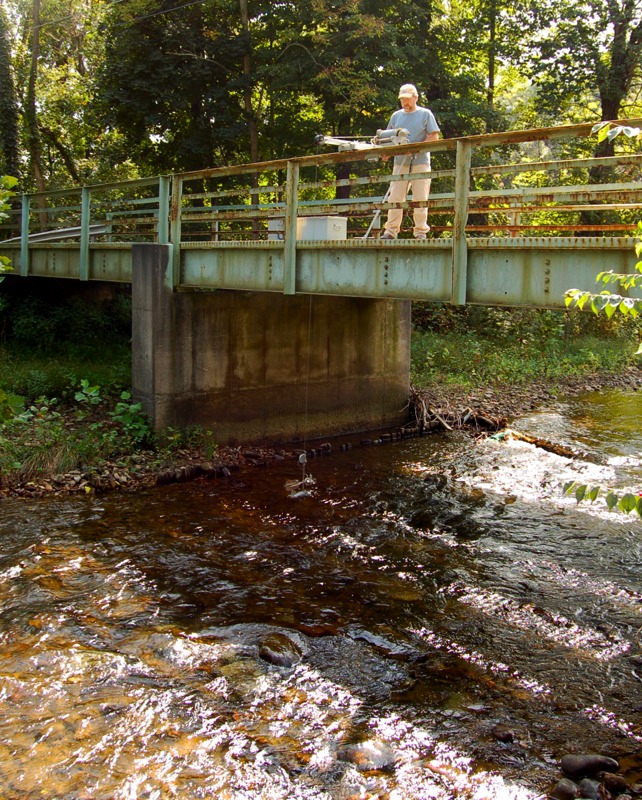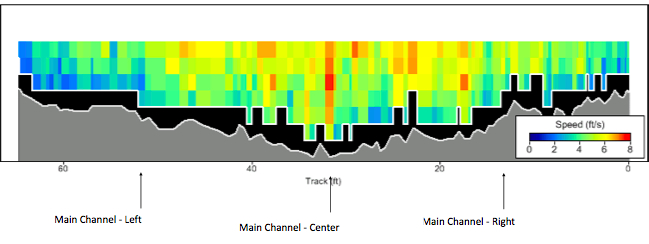Fluvial Processes, Channel Hydraulics, and
Sediment Transport in the Susquehanna River
JESSICA T. NEWLIN, Assistant Professor, Department of Civil and Environmental Engineering
BENJAMIN R. HAYES, Director, Susquehanna River Initiative, Bucknell Environmental Center
R. CRAIG KOCHEL, Professor, Department of Geology
Sediment Transport in the Susquehanna River
JESSICA T. NEWLIN, Assistant Professor, Department of Civil and Environmental Engineering
BENJAMIN R. HAYES, Director, Susquehanna River Initiative, Bucknell Environmental Center
R. CRAIG KOCHEL, Professor, Department of Geology
Bucknell University is located on the banks of the Susquehanna River, which provides an outdoor laboratory for teaching and research on a variety of fluvial processes, river engineering, and aquatic ecology. Over the past 200 years, the river has been heavily influenced by agriculture, mining, logging, and urban development. Therefore, in addition to river management issues on the main channel, many of the smaller tributaries in the area have sediment erosion and deposition problems that have affected local infrastructure and aquatic habitat.
The university’s Susquehanna River Initiative program has purchased a number of flow velocity meters, depth finders, suspended and bedload samplers and are incorporated these field-based techniques into classes and summer research.
The use of hydro-acoustic methods has greatly enhanced existing watershed-based courses by providing students the opportunity to learn ADCP technologies and compare it to traditional methods using Price-type AA bucket wheel and Marsh-McBirney electromagnetic meters. The Sontek RiverSurveyor ADCP and GPS facilitates use of field data for computing the measurement locations and associated depth and water velocity profiles, and provides a basis for collecting additional sediment and water-quality measurements and channel cross section information.
Students learn the principles of incremental methods for measuring discharge and how to collect, process, and analyze the ADCP data to answer real questions about the local river and stream systems:
The university’s Susquehanna River Initiative program has purchased a number of flow velocity meters, depth finders, suspended and bedload samplers and are incorporated these field-based techniques into classes and summer research.
The use of hydro-acoustic methods has greatly enhanced existing watershed-based courses by providing students the opportunity to learn ADCP technologies and compare it to traditional methods using Price-type AA bucket wheel and Marsh-McBirney electromagnetic meters. The Sontek RiverSurveyor ADCP and GPS facilitates use of field data for computing the measurement locations and associated depth and water velocity profiles, and provides a basis for collecting additional sediment and water-quality measurements and channel cross section information.
Students learn the principles of incremental methods for measuring discharge and how to collect, process, and analyze the ADCP data to answer real questions about the local river and stream systems:
- Compare ADCP techniques with traditional velocity methods
- Calculate discharge
- Learn how to import ADCP data into
MatLabTM and ArcGISTM - Compute 2D and 3D velocity profiles
- Assess channel morphology-hydraulic relationships
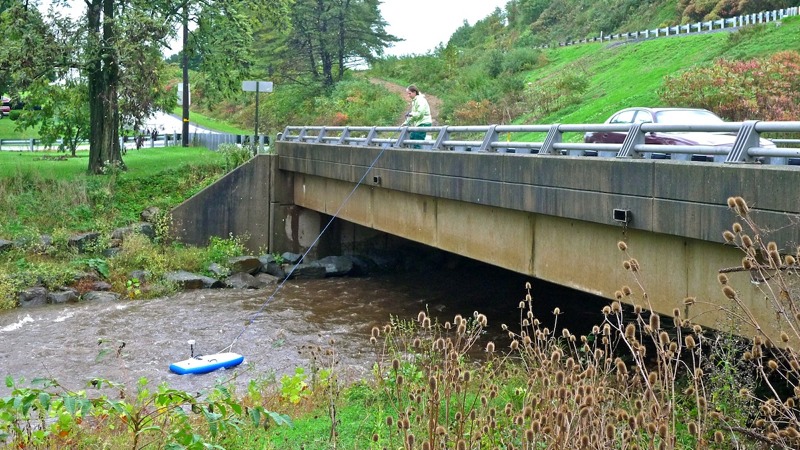
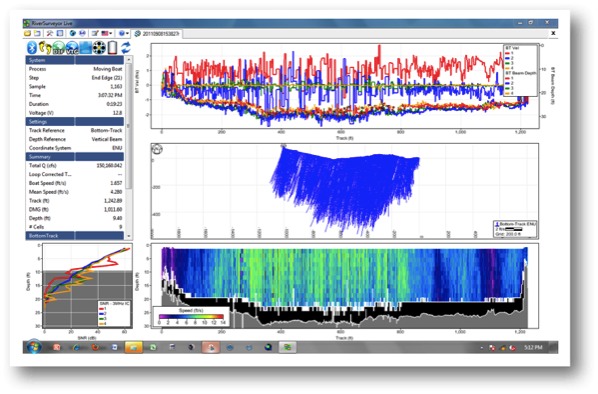
Figure 2. Relative abundance versus size of mussels in West Branch Susquehanna River near Milton, PA.
River as a classroom
West Branch Susquehanna River
West Branch Susquehanna River
The use of hydro-acoustic methods has greatly enhanced existing watershed-based courses by providing students the opportunity to learn ADCP technologies and compare it to traditional methods using Price-type AA bucket wheel and Marsh-McBirney electromagnetic meters. The Sontek RiverSurveyor ADCP and GPS facilitates use of field data for computing the measurement locations and associated depth and water velocity profiles, and provides a basis for collecting additional sediment and water-quality measurements and channel cross section information.
Students learn the principles of incremental methods for measuring discharge and how to collect, process, and analyze the ADCP data to answer real questions about the local river and stream systems:
Students learn the principles of incremental methods for measuring discharge and how to collect, process, and analyze the ADCP data to answer real questions about the local river and stream systems:
- Compare ADCP techniques with traditional velocity methods
- Calculate discharge
- Learn how to import ADCP data into
MatLabTM and ArcGISTM - Compute 2D and 3D velocity profiles
- Assess channel morphology-hydraulic relationships
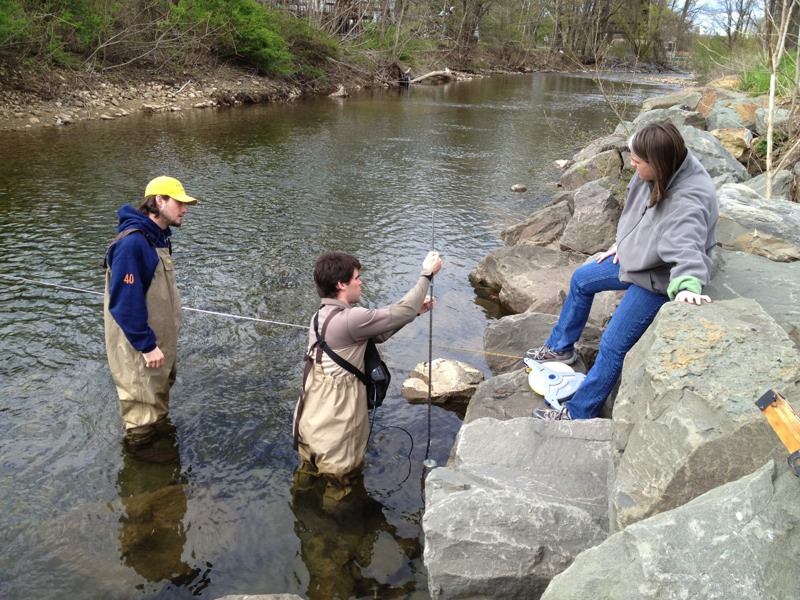
Click to enlarge photo
Figure 3. Professor Newlin helps River Mechanics engineering students learn how to use Marsh McBirney flow meters to assess shear stresses at base of stream restoration structures at White Deer Creek research site.
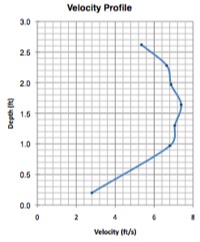
Figure 4. Vertical velocity profile in water column measured using Marsh McBirney magnetic flow velocity meter.
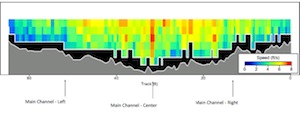
Click to enlarge photo
Figure 5. Two-dimensional variations in flow velocities across the White Deer Creek channel measured using Sontek RiverSurveyor hydroacoustic methods.
Figure 4. Cariosa mussels found in bed of the Susquehanna River.

